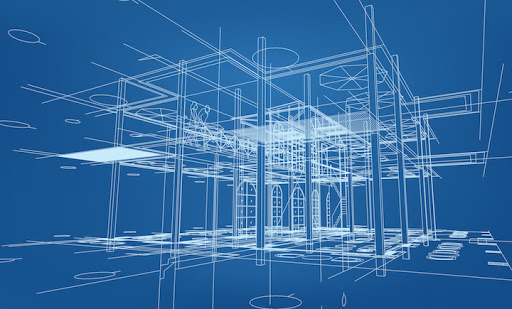Maintenance as it Effects Architectural Decisions
Maintenance is a key component of structural longevity and design. The average residential structure is meant to last around a century with reasonable maintenance. Most of your major building components like windows have similar time scales. It is assumed that after this period of time, the house would probably be redeveloped or massively renovated. And that makes sense, if you look at most century old homes now. They need insulation, new wiring, upgraded plumbing, new windows, etc.
Conversely, most finishes have life spans of much closer to a decade or two. And this makes sense, partially because they often take the brunt of wear and tear. Your siding is exposed to the elements. The flooring is exposed to everyday abuse. Your kitchen is the hardest used room in the house. In addition, these elements fall out of style and are often upgraded or replaced. This often happens when a house changes hands or sometimes just when style trends change.
High versus Low Maintenance – Physical Exertion
When it comes to design, maintenance is an important thing to consider. “Maintenance free” is often a request of our clients because a lot of them are retiring. They don’t want to have to replace items or repair their house often. From that point of view, a vinyl railing or a composite deck board can be a lot easier on older joints than pressure treated wood. However, it still is not maintenance free.
A wooden railing will have to be restained/sealed or painted every few years, but often is a lot cheaper than alternative options. A vinyl railing won’t require much maintenance beyond cleaning on occasion, but would cost more upfront. But there’s also the issue of how can you maintain it. If the wood railing suffers a broken baluster, it would be a lot easier to match the replacement. Whereas the vinyl baluster (which is much more brittle and likely to break after being exposed to UV radiation for years, especially a cheaper version) may not be able to be replaced and might require replacing the entire railing. An aluminum railing combines the maintenance requirements of the vinyl with the ruggedness of the wood. Of course, it usually costs quite a bit more as well. In addition, in salt environments like ours, if the finish is damaged, the railing may not last as long. In this case, desire for maintenance, budget, durability, environment and aesthetics will all play into the final selection.
Upfront Versus Lifecycle Costs
Alternatively, there are many levels of windows you can order. From what we refer to as disposable windows with an effective lifespan of 5-10 years to legacy versions that may outlive the human species. The lower priced windows tend to be really attractive as it can make a big difference to initial bottom line. In fact, many contractors first suggestion to save money is to swap out the windows because it can save so much. However, what if the seals fail within 5-10 years and they need to be replaced? You could end up spending a lot in heating and cooling or upgrading the windows way too quickly. This is often a problem people who buy tract homes run into. The builder can save a lot of money (and hopefully pass that onto the consumer) with a less long lived option. By the time they start to fail, they can be the owner’s problem.
Similarly, many people like the aesthetics of a standing seam metal roof. Generally, because they require skilled installers, it can be a major cost upgrade. Of course, one of the advantages is that this type of roof generally requires almost no maintenance and should last for a century. This long term life cycle cost can make them cheaper than the more common asphalt shingles. This is especially true in window or storm prone regions that might require patching of the shingles on a regular basis. Of course, to make that economic judgement, you have to be thinking about having the house for a long time. Generally speaking, you won’t capture that savings in maintenance in the purchase price by the next owner.
In Conclusion
Maintenance is a crucial part of design. All of your choices should take into account the lifespan of the product. Consider the replacement costs and maintenance costs in conjunction with your goals. Also consider the likelihood of ongoing maintenance. Many condomimium buildings are notorious for putting off repairs because of the costs, so upfront costs that build into the cost of the building may be a good long term solution. If you’re older or not handy, not having to worry about doing these items is probably worth it. If you’re building a home to sell, you might start out with cheaper materials upfront. The maintenance or replacement costs won’t fall on you and you may be able to maximize your profit. If you’re building a home you expect to outlast you for your kids or a home you expect to stay in until the end, longterm maintenance methods and costs may be more important than the upfront costs.
Understanding how your choices could affect these items can help keep your home safe because it doesn’t matter how well we design it, if the maintenance requirements of a home are more than the owner can or wants to handle, there is no way that home will last the century it really should.
